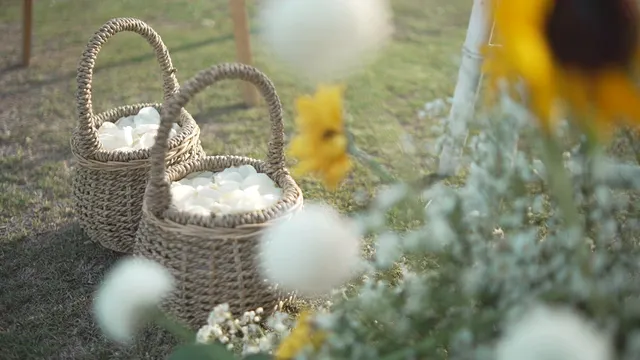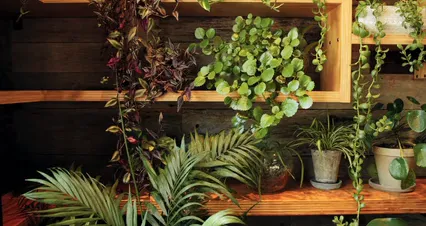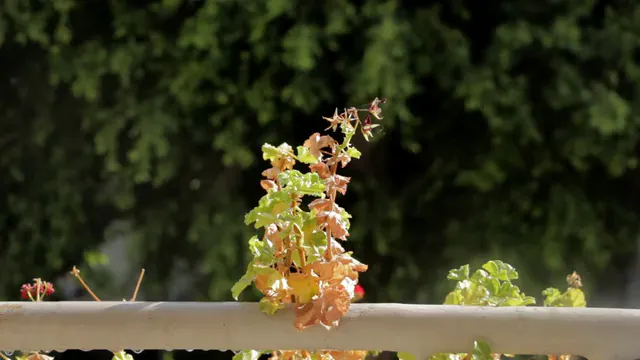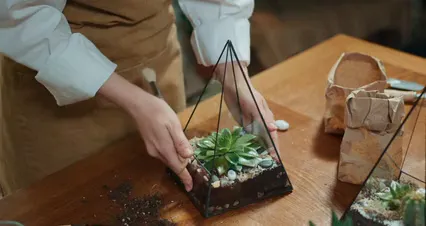

The Complete Guide to Planter Boxes: Transform Your Space with Style
Introduction
Have you ever thought about adding some greenery to your home? Planter boxes are a fantastic way to do just that! They’re becoming increasingly popular in gardening and home decor. These versatile boxes not only beautify spaces but also help you grow your favorite plants. Whether you have a sprawling garden or a small balcony, planter boxes can fit right in. This guide will help you understand their benefits and how to use them effectively.
Speaking of enhancing your home, have you checked out the Wooden Planter Box? It’s an ideal choice for adding that rustic charm to your garden while providing the perfect home for your plants. Just think about how lovely it would look filled with blooming flowers or fresh herbs!

Summary and Overview
Planter boxes are incredibly versatile. They work well indoors and outdoors, giving you countless options for design. Available in various materials like wood, metal, and plastic, you can choose styles that suit your taste. Functionally, they save space, improve aesthetics, and promote plant health. This article aims to provide insights into selecting the right planter boxes, maintaining them, and decorating your space with them.
While you’re at it, don’t forget to check out the Vertical Planter. Perfect for those of us who have a knack for gardening but are short on space! It’s like giving your plants a little lift—literally!

Understanding Planter Boxes
What is a Planter Box?
A planter box is a container specifically designed for growing plants. These boxes come in different sizes and shapes, making them suitable for various plant types. Common shapes include rectangular and square forms. With home gardening on the rise, more people are embracing container gardening. In fact, recent trends show that over 55% of urban gardeners prefer using planters. So, think about what you want to grow and how a planter box can meet your gardening needs!
And if you’re looking to start an herb garden, you can’t go wrong with the Herb Garden Starter Kit. It’s like having a mini spice shop right in your kitchen, and who wouldn’t want fresh basil at their fingertips?

Types of Planter Boxes
There are several types of planter boxes to consider. Raised beds are great for larger plants and provide excellent drainage. Window boxes, on the other hand, are perfect for flowers and herbs, enhancing your windowsill’s appeal. Vertical planters are ideal for small spaces, allowing you to maximize your gardening area. Statistics reveal that nearly 40% of gardeners use vertical gardening methods. Each type offers unique benefits and can fit different spaces. Assess your area to see which planter box type suits your gardening style best.
And if your gardening style includes a touch of elegance, you might want to explore the Ceramic Planter. They not only serve as a perfect home for your plants but also add a stylish touch to your decor!

Choosing the Right Planter Box
Material Considerations
When selecting a planter box, the material is crucial. Common options include wood, plastic, metal, and ceramic. Each material has its benefits and drawbacks.
Wood offers excellent aesthetics and insulation for plants. However, it can rot over time, especially in moist conditions. On average, untreated wood lasts about 5-10 years. Plastic, on the other hand, is lightweight and resistant to moisture. Yet, it may not be as visually appealing and can fade in sunlight.
Metal planters are durable and provide a modern look. But, they can heat up quickly, potentially harming plant roots. Ceramic planters are beautiful and heavy, ensuring stability, but they may crack in freezing temperatures.
Considering durability, aesthetics, and maintenance is vital when choosing your planter material. Think about your climate and the overall style you want to achieve in your garden or home.

Speaking of aesthetics, if you’re looking for an easy way to add some flair to your garden, consider the Garden Decor Statues. They’re like the cherry on top of your gardening sundae!
Size and Space
Choosing the right size planter is essential for plant health. Consider the dimensions and the types of plants you wish to grow. For instance, tomatoes typically require at least a 5-gallon planter to thrive, while herbs can grow well in smaller containers.
Space planning is equally important. If you have limited room, opt for vertical planters or window boxes. They maximize space while allowing you to cultivate various plants. For more ideas on maximizing your space, check out DIY vertical gardening ideas for apartments.

Vertical planters can be a great solution for small spaces, allowing you to grow a variety of plants. Explore more about vertical gardening.
On average, most flowering plants need a planter at least 12 inches deep. Before purchasing, measure your available space to ensure a perfect fit. Remember, the right size will support healthy growth and make your area more visually appealing.
Watering and Fertilizing
Proper watering and fertilizing are vital for plants in planter boxes. Start by understanding your plants’ needs. For most varieties, watering once a week is ideal. However, some plants might need more frequent watering, especially in hot weather. A good rule of thumb is to check the top inch of soil; if it feels dry, it’s time to water.
When it comes to quantity, aim for deep watering. This encourages roots to grow downwards, making plants stronger. A slow drip irrigation system can be a great solution, providing consistent moisture without overwatering. Check out this fantastic Drip Irrigation Kit to make watering a breeze!
Fertilization is equally important. Use a balanced, slow-release fertilizer every few months. Organic options, like compost or worm castings, are excellent for plant nutrition. In spring, when plants are actively growing, they may benefit from additional nutrients.
As seasons change, adjust your watering and fertilizing schedule. During winter, plants require less water and fertilizer. Consider creating a watering schedule to keep everything on track. This will ensure your plants thrive in their planter boxes!

Outdoor Aesthetic Enhancement
Planter boxes can truly transform your outdoor spaces. Whether you have a cozy balcony or a spacious patio, these boxes add character and charm. Imagine lush greenery lining your garden path or vibrant flowers brightening your balcony. Studies show that incorporating plants can boost outdoor aesthetics by up to 50%.
Consider creating themed garden spaces for a unique touch. A rustic herb garden can complement a farmhouse style, while a tropical planter box can bring a vacation vibe to your backyard. You could even mix and match colors and textures for a more dynamic look. For ideas on herb gardening, check out organic vegetable gardening for beginners.

Creating themed spaces can enhance your outdoor aesthetics. Explore more about organic vegetable gardening.
Think about the type of plants you love. Succulents can thrive in sunny spots, while ferns flourish in shaded areas. With some creativity, your outdoor design can reflect your personality and style. So, why not start reimagining your outdoor spaces today? It’s time to let your garden shine! And if you want to give your succulents the perfect home, check out a Succulent Planter Set!

FAQs
What is the best material for a planter box?
Choosing the right material is essential for durability and aesthetics. Popular options include wood, plastic, metal, and ceramic. Wood offers natural beauty and good insulation but can rot over time. Plastic is lightweight and moisture-resistant; however, it may fade under sunlight. Metal provides a modern look but can heat up quickly, harming roots. Ceramic is stable and visually appealing, yet it can crack in cold weather. Consider your climate and desired style when selecting planter materials. Each option has pros and cons depending on your gardening needs.
How do I ensure my planter box has proper drainage?
Good drainage is vital for plant health. Start by drilling drainage holes in the bottom of your planter box. This allows excess water to escape, preventing root rot. You can also add a layer of gravel at the bottom. This helps water flow out while keeping soil in place. Use a well-draining soil mix that includes perlite or vermiculite. These drainage techniques will promote healthy roots and vibrant plants.
Can I use a planter box for vegetables?
Absolutely! Planter boxes are great for vegetable gardening. They allow you to control soil quality and drainage, which is crucial for healthy growth. Choose deep boxes for root vegetables like carrots and potatoes. For leafy greens, shallower boxes will suffice. Ensure your planter receives plenty of sunlight. Regularly water and fertilize to keep your plants thriving. With the right care, you can grow a bountiful vegetable garden in a planter box.
What are the best plants for indoor planter boxes?
Indoor planter boxes can house a variety of plants. Low-light plants are particularly suitable for indoor environments. Consider options like snake plants, pothos, or peace lilies. These plants thrive in less sunlight and require minimal maintenance. Succulents and cacti are also great choices, adding a unique touch to your decor. Choose plants that match your indoor lighting conditions for the best results.
How often should I water my planter box?
Watering frequency can vary based on plant types and seasons. Generally, most plants need watering once a week. However, during hot weather, they might require more. Check the top inch of soil; if it feels dry, it’s time to water. Deep watering encourages strong root growth. Adjust your watering schedule based on seasonal changes to ensure your plants remain healthy and vibrant. Regular care will keep your planter box flourishing!
Please let us know what you think about our content by leaving a comment down below!
Thank you for reading till here 🙂 And if you’re planning a picnic in your garden, don’t forget to grab a Picnic Blanket to make your outdoor experience even cozier!
All images from Pexels



